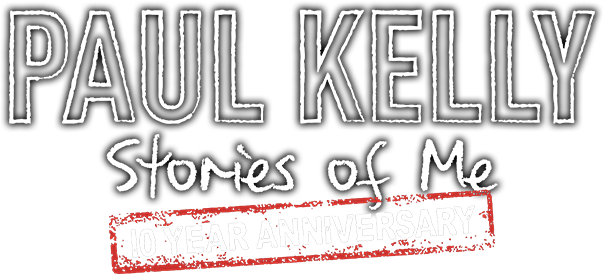Student’s Lesson
Personal Response to the Documentary
Student Activity: Refining a personal response
Use the table below to chart your journey from an initial response to PAUL KELLY — STORIES OF ME to a response that recognises social and cultural influences that can shape your attitudes and tastes.
You can download an interactive PDF of this form below.
| Key questions |
Details |
Reasons or elaborations |
| Am I able to identify with a character or situation? |
|
|
| What elements of the text invite this? | ||
| What aspects of my context influence this? |
|
|
| How have my listening, reading and viewing practices influenced my response? |
|
|
| Is my response consistent with a particular reading community? |
|
Download this form: Refining a personal response (PDF)
Reading critically
This activity is designed to explore the role of silence in the representation of Paul Kelly. The opening interviews characterise him as an observer, a great listener, not an open book. He is also described as a bard or a kind of everyman whose voice covers a vast range of people. The opening of the documentary establishes the central concern of the documentary: who exactly is Paul Kelly. Kelly’s hesitant, unelaborated response — I mean, I’m inside him so I can’t describe him — demonstrates how silence can be used to amplify meaning.
Student Activity: Exploring the concept of silence and how it operates in texts.
In class, read Carol Duffy’s poems Mrs Darwin[1] and Mrs Sisyphus[2]
- Discuss the poems focusing on
- why Duffy would write portraits of Mrs Darwin and Mrs Sisyphus in her anthology The World’s Wives
- why she would choose to represent the wives of these men
- how the satire operates in these poems
- what Duffy hopes to achieve by breaking the silence of these wives of historical figures
- what role does the reader play in supplying meaning to the silencing of Mr Darwin and Mr Sisyphus.
- Find examples of silence represented in a range of texts such as visual images, extracts of dialogue in texts, examples of language that silences particular perspectives and bring them to class. In small groups share these texts explaining how they relate to the idea of silence.
- As a class, view the opening sequence of the documentary (00:00–05:50) and:
- Contrast Kelly’s opening comments about the meaning singing has for him with his remarks to the director Ian Darling in response to the question: who exactly is Paul Kelly?
- List the verbs — shouting, singing, moaning, crying, pleading, praising, whooping, shouting, talking, whispering, calling, cajoling, defying — and discuss the shades of intensity they represent.
- Compare these elaborations with the unelaborated answer he offered in the interview. In your class discussion, explore the paradoxes and conclusions that can be drawn from the different responses considering how composing music gives expression and celebrates voice.
- In groups, view the remainder of the documentary to
- identify and evaluate stories from Paul Kelly’s life which illustrate how silence shapes the portrayal of Paul Kelly as a character in this documentary.
- analyse the reflections the song lyrics offer on how silence shapes relationships
- reflect on the relationships between audiences, performance and silence.
Creating: The sounds of silence
-
Using this investigation, create a text that explores the complex relationship between silence and voice. This could be a feature article, an imagined letter, a reworked song or an interview.
[1] https://genius.com/Carol-ann-duffy-mrs-darwin-annotated
[2] https://genius.com/Carol-ann-duffy-mrs-sisyphus-annotated
The reviews
Once a text goes into the public domain and faces an audience, the process of criticism begins. This may be formal (in a newspaper, magazine, journal, etc.) or informal (conversations, Facebook blogs etc.). This is referred to as the reception of the text, that is, how it is received by the public.
Class discussion:
- How often have you read reviews of texts?
- Where do you find these?
- Do you always trust the review?
Student activity: Understanding and writing reviews
In groups, choose one of the public reviews links below, ensuring that all are covered by the class and complete the table. You can download an interactive PDF of this form below.
| Features of a review | Your comments | |
| Does the review | name the film and director | |
| give an overview of the film | ||
| discuss what was liked | ||
| discuss what wasn’t liked | ||
| refer to the film craft? | ||
| Are there examples of | a personal comment | |
| film techniques | ||
| plot summary | ||
| research | ||
| opinion | ||
| comment on the director | ||
| purpose of the film | ||
| reference to target audience? | ||
| How does the title of the review position the audience? | ||
| Find a statement that makes you want to see the film. | ||
| Find a statement that makes you think twice about seeing the film. | ||
| List the positive words and phrases used in the review. | ||
| List the negative words and phrases used in the review. | ||
| What is the tone of the review? | ||
Download this form: Understanding and writing reviews (PDF)
- Report your group’s findings to the class.
- Make sure you have read at least two of the other reviews. Using these and your knowledge of the conventions of reviewing films, write a review of a film, television show or video game that you have seen recently.
ANALYSING & EVALUATING RESPONSE / CULTURAL VALUE
